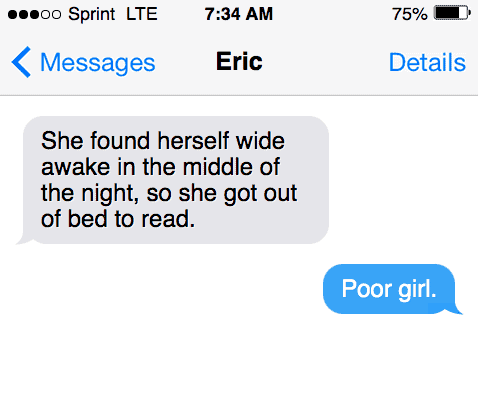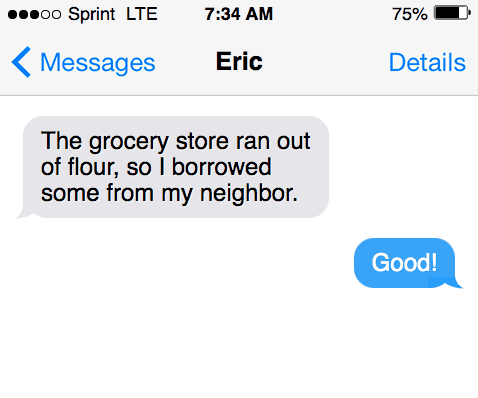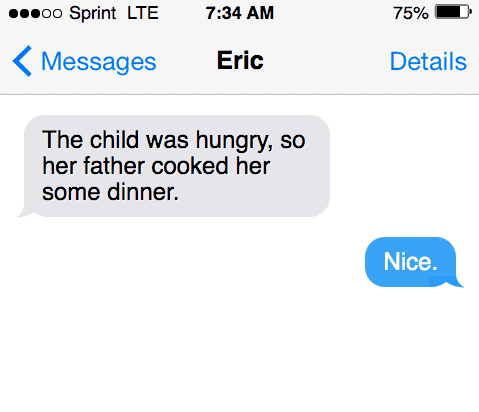When to place a comma before ‘so’ is a great question; it’s likely to come up again in writing, so prepare ahead of time by learning when to use a comma before the conjunction “so.”
Remember—there are no wrong questions—and this is especially true when it comes to the rules of grammar. Using proper grammar and punctuation in writing is an essential and critical skill. Take the time, learn the lesson, and become a better writer.
What is a comma?
A quick refresher: what is a comma, anyway? Arguably the most common form of punctuation in English grammar, the comma signifies a small stop or break in a sentence, which allows the reader a momentary break in reading.

How to use a comma?
Punctuation marks, in general, function as writing aids to improve the flow and rhythm of writing. The comma symbol (,), specifically, indicates a pause or soft break in the flow of writing to the reader.
There are eight main comma rules to follow in basic English grammar. One of these rules explains when to use a comma before “so.”
Comma rules: conjunction: place a comma before so when sentences are combined using ‘so’ as the coordinating conjunction.
When do you need a comma before “so?”
Answer: Commas precede coordinating conjunctions when connecting two independent clauses into a single sentence.
In plainer English: Put a comma before so when two standalone sentences are connected into one single sentence or complete thought.
In most cases, do not place a comma before “so” when an independent clause is used to connect with a subordinating clause; i.e., connecting a complete sentence with an incomplete sentence or thought. Remember that subordinate clauses cannot stand alone. A subordinating clause must have an independent clause as a complement to express a complete thought.
As a rule of thumb, when there are two independent clauses in the same sentence that use the conjunction so: use a comma.

Sentences that use a comma before “so” examples
Each of these sentences demonstrates the correct and incorrect use of a comma before so:
✔️ Correct: She found herself wide awake in the middle of the night, so she got out of bed to read.
❌ Incorrect: She found herself wide awake in the middle of the night so she got out of bed to read.
✔️ Correct: The grocery store ran out of flour, so I borrowed some from my neighbor.
❌ Incorrect: The grocery store ran out of flour so I borrowed some from my neighbor.
✔️Correct: The child was hungry, so her father cooked her some dinner.
❌ Incorrect: The child was hungry, so her father cooked her some dinner.
Other uses of commas includes when they are used to separate items from a list, series and/or sequence. There are other uses as well, which is all the more reason why it’s critical to learn how to get right!
What are coordinating conjunctions?
Remember the Schoolhouse Rock song, “Conjunction junction, what’s your function?” It’s funny and educational. As the rhyme says, there are seven coordinating conjunctions: and, for, but, yet, or, so and nor.
Quick tip! To remember each coordinating conjunction think of the mnemonic FANBOYS (For—And—Nor—But—Or—Yet—So.)
So, when coordinating conjunctions connect two independent clauses, the conjunction is preceded by a comma. These are distinct from the subordinating conjunctions (once, while, when, whenever, where, wherever, before, and after.) Subordinating conjunctions are used to connect dependent and independent clauses to form complete sentences.
Think of the coordinating conjunction as working alongside the comma, like a magic superglue that connects an independent clause into a single, more extensive sentence.
Does the sentence below have two clauses? Take a closer look to see if it’s possible to separate them.
Example: She found herself wide awake in the middle of the night so she got out of bed to read.
First sentence: She found herself wide awake in the middle of the night.
Second sentence: So she got out of bed to read.

Does a comma go after “so?”
Answer: When connecting a subordinate clause with an independent clause.
Can a sentence begin with “so?”
Contrary to widespread misconception in English grammar, it is acceptable to begin sentences with the coordinating conjunctions. In order words, it’s OK to use so to at the start of a sentence.
In fact, The Chicago Manual of Style (which is the veritable guide for American/English grammar,) says there is nothing wrong with using conjunctions to introduce independent clauses. Here’s a direct quote:
There is a widespread belief—one with no historical or grammatical foundation—that it is an error to begin a sentence with a conjunction such as and, but or so. In fact, a substantial percentage (often as many as 10 percent) of the sentences in first-rate writing begin with conjunctions. It has been so for centuries, and even the most conservative grammarians have followed this practice.— The Chicago Manual of Style
There you have it! The conjunction has been used to start sentences since Shakespeare was writing his plays. If a teacher argues this point, quote the Chicago Manual of Style, stating it as first-rate writing!
Glossary of terms
Independent clause: A standalone sentence that contains a complete thought.
Complete sentence: Includes a subject, predicate, and an entire thought or idea.
Dependent clause: An incomplete sentence that contains a subject and a verb, though is not a complete thought, is a dependent clause.
Coordinating conjunction: But, for, and yet, are coordinating conjunctions that tie two independent clauses into a single sentence. There are seven coordinating conjunctions in total.
Punctuation mark: Any grammatical symbol of punctuation used in writing.
Sources
- Definition of Independent clause: grammar-monster.com/glossary/independent_clause
- Definition of comma: eslbuzz.com/rules-for-comma-usage
- Definition of coordinating conjunction: cuyamaca.edu
- Definition of subordinating conjunction: grammarly.com
Inside this article
Fact checked:
Content is rigorously reviewed by a team of qualified and experienced fact checkers. Fact checkers review articles for factual accuracy, relevance, and timeliness. Learn more.
Core lessons
Glossary
- Abstract Noun
- Accusative Case
- Anecdote
- Antonym
- Active Sentence
- Adverb
- Adjective
- Allegory
- Alliteration
- Adjective Clause
- Adjective Phrase
- Ampersand
- Anastrophe
- Adverbial Clause
- Appositive Phrase
- Clause
- Compound Adjective
- Complex Sentence
- Compound Words
- Compound Predicate
- Common Noun
- Comparative Adjective
- Comparative and Superlative
- Compound Noun
- Compound Subject
- Compound Sentence
- Copular Verb
- Collective Noun
- Colloquialism
- Conciseness
- Consonance
- Conditional
- Concrete Noun
- Conjunction
- Conjugation
- Conditional Sentence
- Comma Splice
- Correlative Conjunction
- Coordinating Conjunction
- Coordinate Adjective
- Cumulative Adjective
- Dative Case
- Determiner
- Declarative Sentence
- Declarative Statement
- Direct Object Pronoun
- Direct Object
- Diction
- Diphthong
- Dangling Modifier
- Demonstrative Pronoun
- Demonstrative Adjective
- Direct Characterization
- Definite Article
- Doublespeak
- False Dilemma Fallacy
- Future Perfect Progressive
- Future Simple
- Future Perfect Continuous
- Future Perfect
- First Conditional
- Irregular Adjective
- Irregular Verb
- Imperative Sentence
- Indefinite Article
- Intransitive Verb
- Introductory Phrase
- Indefinite Pronoun
- Indirect Characterization
- Interrogative Sentence
- Intensive Pronoun
- Inanimate Object
- Indefinite Tense
- Infinitive Phrase
- Interjection
- Intensifier
- Infinitive
- Indicative Mood
- Participle
- Parallelism
- Prepositional Phrase
- Past Simple Tense
- Past Continuous Tense
- Past Perfect Tense
- Past Progressive Tense
- Present Simple Tense
- Present Perfect Tense
- Personal Pronoun
- Personification
- Persuasive Writing
- Parallel Structure
- Phrasal Verb
- Predicate Adjective
- Predicate Nominative
- Phonetic Language
- Plural Noun
- Punctuation
- Punctuation Marks
- Preposition
- Preposition of Place
- Parts of Speech
- Possessive Adjective
- Possessive Determiner
- Possessive Case
- Possessive Noun
- Proper Adjective
- Proper Noun
- Present Participle
- Prefix
- Predicate



